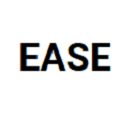Within anthropology, the use of three-dimensional (3D) imaging has become increasingly common and widespread since it broadens the available avenues for addressing a wide range of key anthropological issues. The ease with which 3D models can be generated and shared has major impact on research, cultural heritage, education, science communication, and public engagement, as well as contributing to the preservation of the physical specimens and archiving collections in widely accessible data bases. Current scanning protocols have the ability to create the required research quality 3D models; however, they tend to be time and labor intensive and not practical when working with large collections. Here we describe a streamlined Batch Artifact Scanning Protocol to rapidly create 3D models using a medical CT scanner. While this method can be used on a variety of material types, we have, for specificity, applied our protocol to a large collection of experimentally broken ungulate limb bones. By employing the Batch Artifact Scanning Protocol, we were able to efficiently create 3D models of 2,474 bone fragments at a rate of less than 4 minutes per specimen.
翻译:暂无翻译




